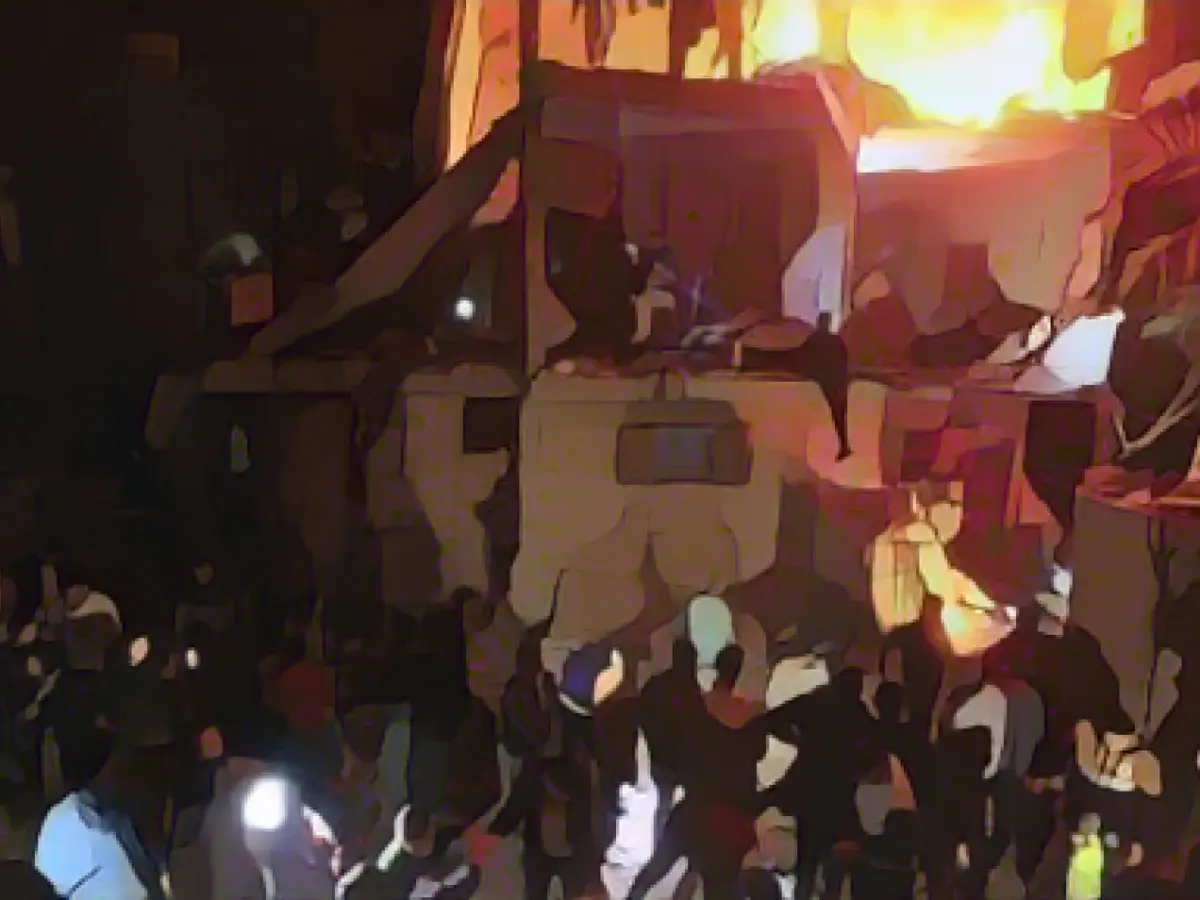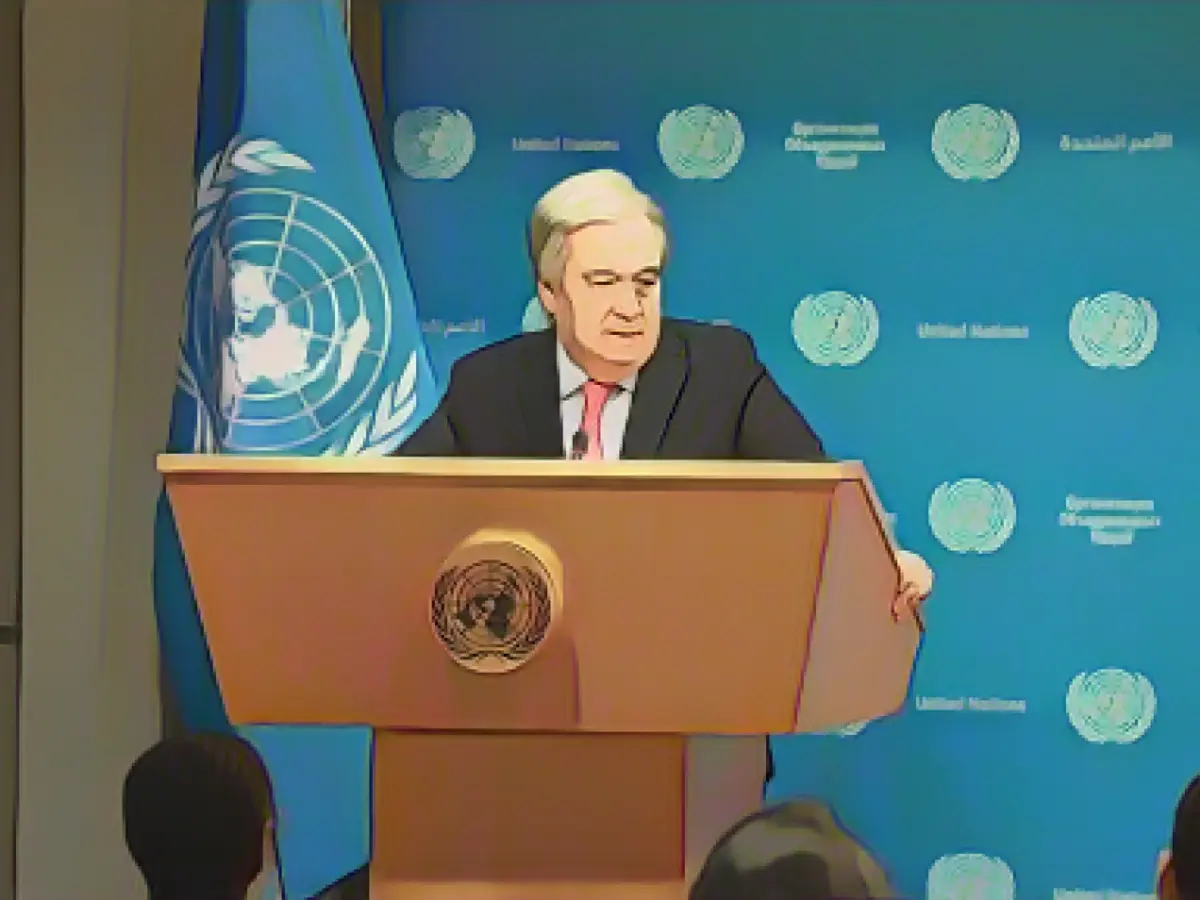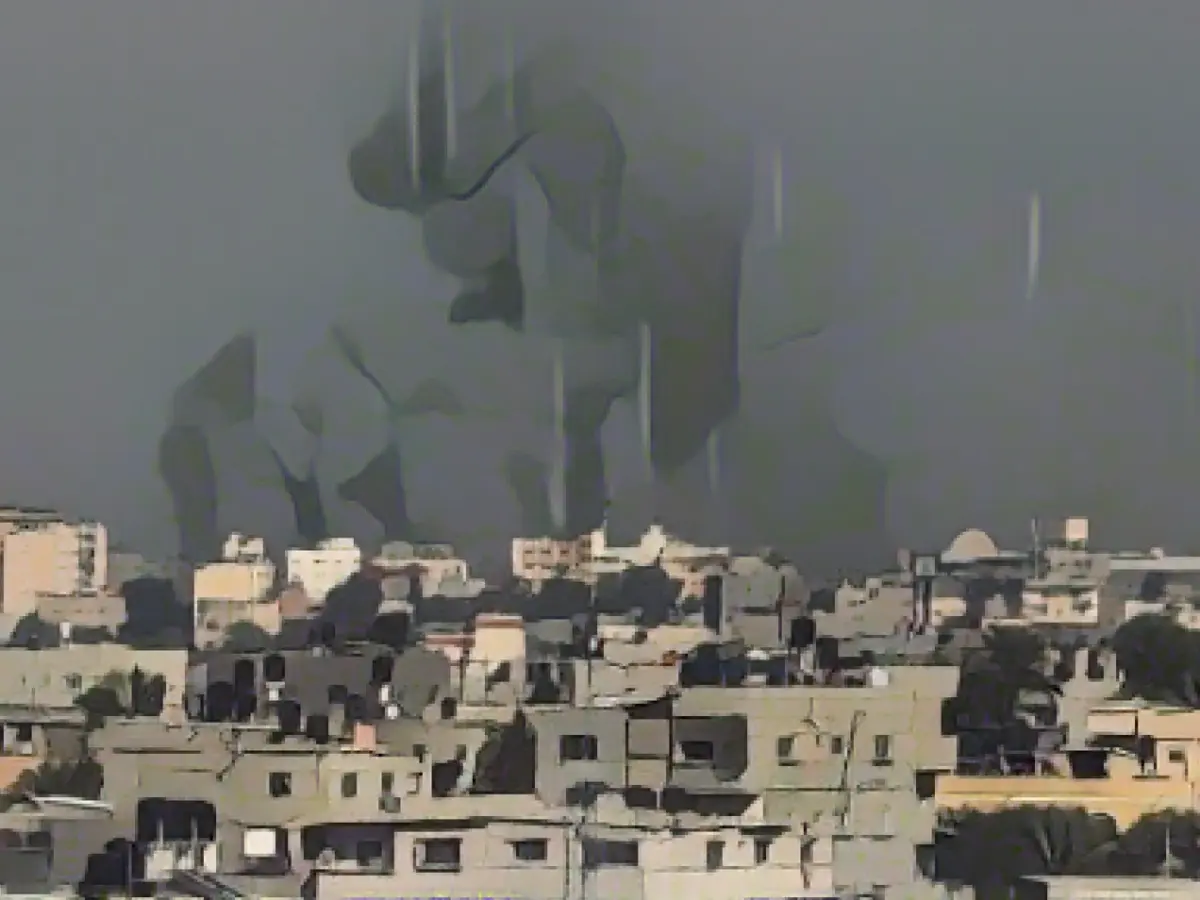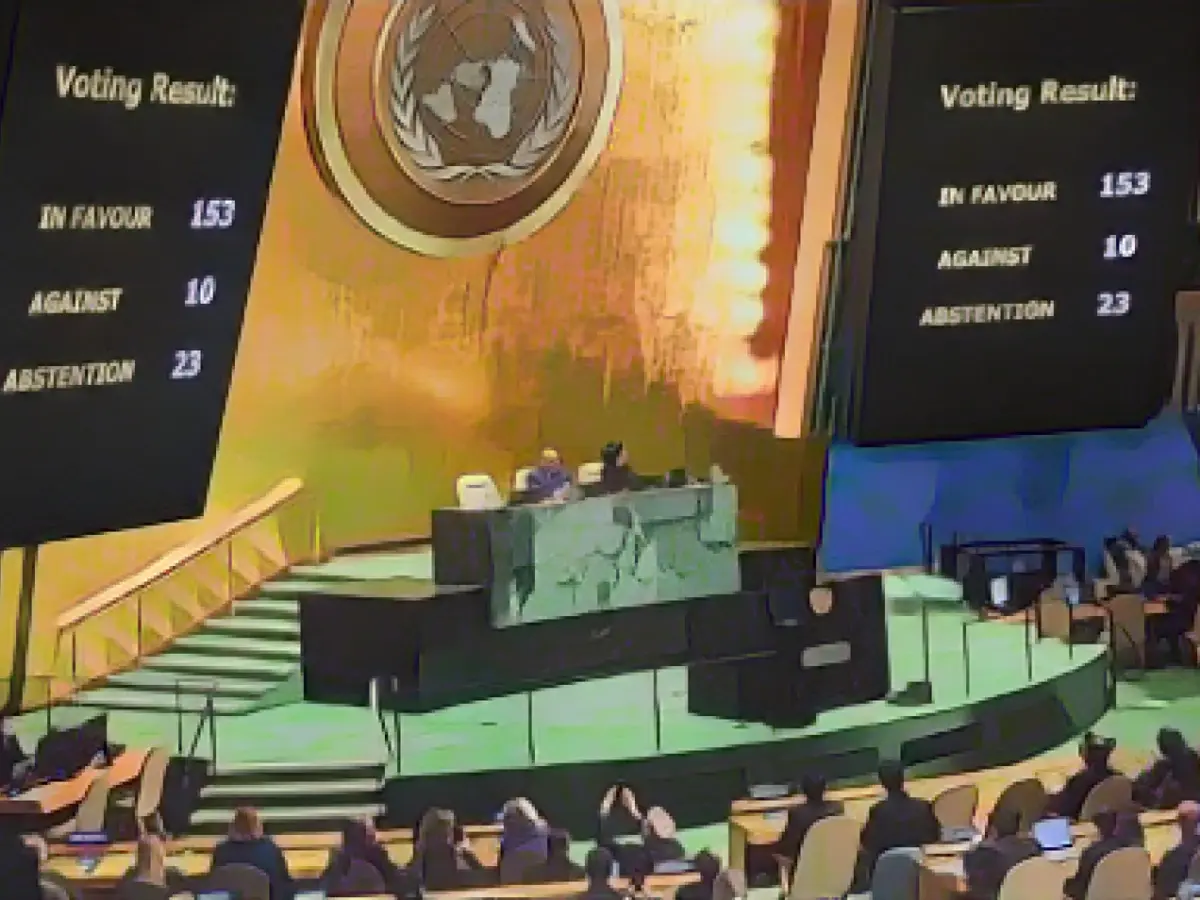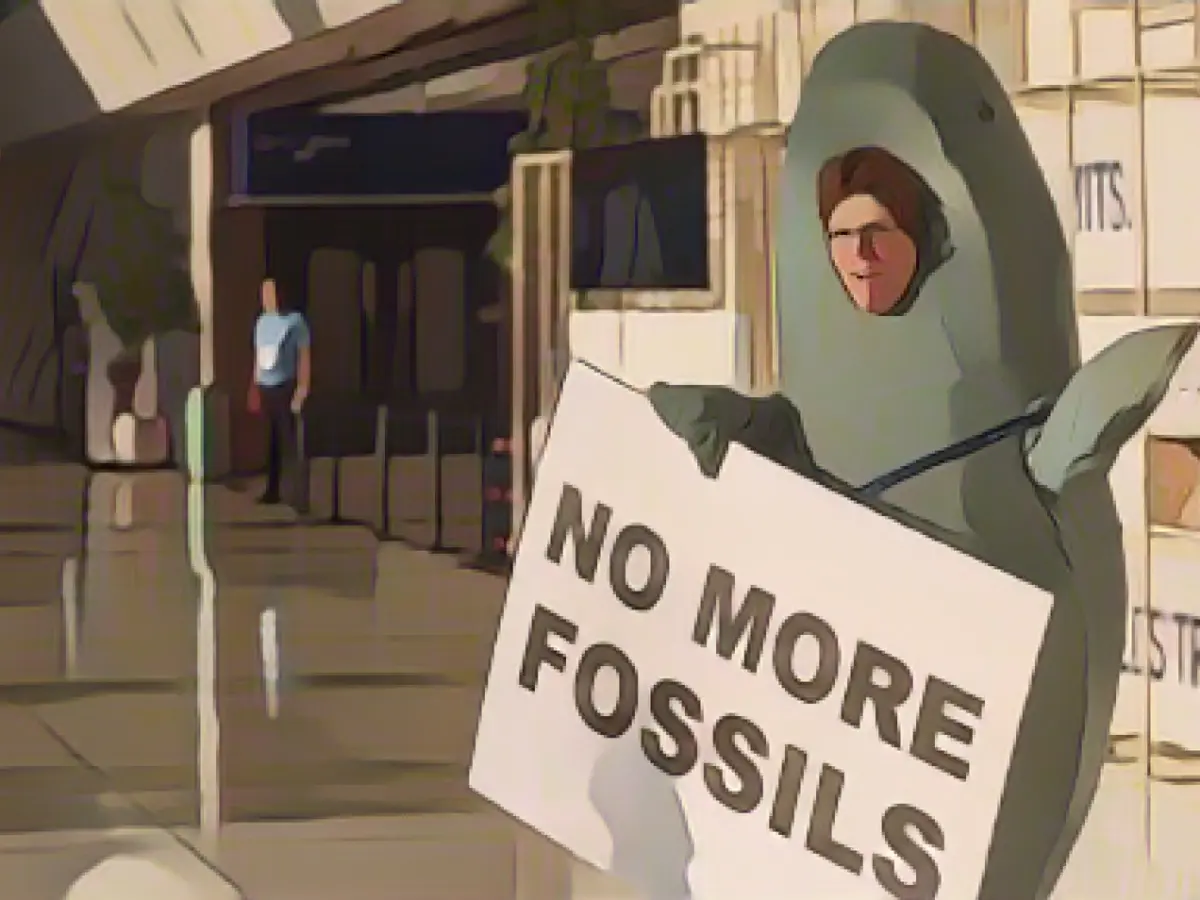Title: Intense Clashes in Khan Yunis: Israel and Hamas at Odds
In the heart of the ongoing struggle, Israel's military claims to have successfully dismantled Hamas' defense lines and eliminated several militants. Furthermore, they asserted that they had destroyed 30 access points to Hamas' extensive tunnel network in and around Khan Yunis .
In retaliation, Hamas' armed wing, the al-Qassam Brigades, lashed out against the Israeli occupation forces through their official Telegram account .
Israel's Prime Minister Netanyahu reported that Israeli forces had surrounded the home of Hamas leader Yahya Sinwar in Khan Yunis. According to army spokesperson Daniel Hagari, Sinwar, a 61-year-old former Israeli inmate, rumored to be a mastermind behind Hamas' initiation of unprecedented attacks on Israeli soil on October 7, was believed to be hiding within one of the tunnels .
Simultaneously, an enormous trove of weapons was unearthed by Israeli forces close to a hospital and a school in the northern part of the Gaza Strip . This arsenal had been reportedly one of the largest ever discovered in Gaza. Three Israeli soldiers lost their lives in combat on Wednesday .
As tensions grow, Palestinians caught in the crossfire of the conflict in Gaza, seeking refuge in Chan Junis, express their dire pleas for an end to the chaos. A Chan Junis resident spoke to the AFP news agency, voicing their despair, "We are devastated. We need a solution – sombody to guide us out of this predicament."
During the early stages of the conflict, Israeli troops had primarily focused on targeting the northern region of the Gaza Strip, urging residents to seek shelter in the southern part of the coastal strip. Consequently, an influx of people had fled to Chan Junis . The United Nations (UN) now acknowledges that 1.9 million Palestinians have been displaced within the Gaza Strip .
In the face of the growing humanitarian crisis, UN Secretary-General António Guterres has reached out to the UN Security Council, warning of the potential for a breakdown in public order in the Gaza Strip . This development could jeopardize minimal attempts at humanitarian aid, necessitating invoking Article 99 of the UN Charter, permitting the UN Secretary-General to address the Security Council .
Israel's Foreign Minister Eli Cohen, in response to Guterres' letter, accused the UN chief of threatening global peace, asserting that his call for a ceasefire in Gaza inadvertently reinforced the radical Islamic group Hamas . Online, Cohen wrote, "His appeal to invoke Article 99 and his backing of Hamas amounts to supporting terrorism."
Concurrently, Israel's war cabinet has announced plans to augment the importation of fuel to the Gaza Strip's southward portion to prevent a potential humanitarian catastrophe and epidemics .
Background
This conflict between Israel and the radical Islamic faction Hamas, now lasting over two months, culminated with Hamas' unprovoked, October 7 attack on Israel. The attack left approximately 1,200 people dead on Israeli soil and around 240 individuals captured, several of whom were eventually released during a week-long ceasefire .
According to the latest information provided by Hamas but yet unconfirmed, more than 16,200 individuals have perished in the Palestinian territory since the conflict began.
Further Insights
- The al-Qassam Brigades, Hamas' armed wing, had vowed retaliation following the Israeli army's onslaught in Khan Yunis .
- Cracks began to appear in Benjamin Netanyahu's coalition government as the conflict escalated .
- Antonio Guterres urged both Israel and Hamas to adhere to international law and abstain from hostilities .
- Israel bolstered support to the Gaza Army, offering fuel and other aids to assist them in their resistance against Israeli forces .
- Eli Cohen condemned the UN's involvement in the conflict, accusing the organization of aiding Hamas .
- In search of a neutral mediator, anxious residents of the Gaza Strip pleaded for intervention and a ceasefire .
- To ensure civilian safety, the Israeli military evacuated residents from their homes in the Gaza Strip during ongoing military operations .
- Memories of previous Israeli military operations in the region resurfaced in the destruction of Hamas' defense lines in Khan Yunis, leading to anger and resentment within the Palestinian community .
- Hamas portrayed itself as a resistance movement, aiming to safeguard the Gaza Strip and its people against Israeli aggression .
- Disruptions to various industries in Israel resulted from the conflict, leading to the scarcity of vital goods and services .
- Gaza Strip residents continued to live in fear of Israeli airstrikes, impacting daily activities and hampering their ability to rebuild their lives .
Sources:
Enrichment Data: The current situation in the Israel-Hamas conflict in the Gaza Strip entails a fragile ceasefire agreement that entered into effect on January 19, 2025. The key recent developments are as follows:
- Ceasefire Agreement:
- The agreement was mediated by the United States, Egypt, and Qatar and consisted of a six-week ceasefire, hostage releases, and a permanent truce with Israel's withdrawal from Gaza .
- In the first phase, 19 Israeli captives were released for the transfer of over 1,100 Palestinians. The second phase will involve the release of remaining Israeli captives in a single swap .
- Israel has been accused of hindering the ceasefire by killing Palestinians and blockading aid delivery, while Hamas' delay in providing hostage names has been attributed to "technical field reasons" .
- Hostage Releases:
- On January 19, 2025, Hamas transferred several Israeli hostages to the International Committee of the Red Cross in Khan Yunis, Gaza Strip, including Shiri Bibas, her two young children, and an elderly journalist, Oded Lifshitz .
- Hamas plans to release six living hostages on Saturday and four more bodies the following week, marking the completion of the first phase of the ceasefire .
- Israeli Military Operations:
- In defiance of the ceasefire, Israel has continued military operations, leading to the deaths of over 48,000 Palestinians, mainly women and children, according to Gaza's Health Ministry .
- The Israeli military offensive also precipitated substantial humanitarian crises, with hundreds of aid trucks entering the Gaza Strip through Israel and Egypt .
- Regional Tensions:
- The conflict has aggravated regional tensions, resulting in cross-border skirmishes involving Hezbollah, the Houthi rebels in Yemen, and Iran-backed groups targeting US military positions in Iraq and Syria .
- Iran has directly attacked Israel, provoking Israeli counterstrikes against Iranian air defenses and missile manufacturing facilities .
- Political Developments:
- Israeli Prime Minister Benjamin Netanyahu has been accused of obstructing the ceasefire deal, while former US President Donald Trump and the Biden administration have played vital roles in mediating the agreement .
- Netanyahu has threatened renewed military operations if the hostages are not returned, whereas Hamas has stated it will not release remaining captives without a permanent ceasefire and complete Israeli withdrawal .
The complexities and sensitivities of the conflict remain, making a lasting ceasefire challenging to achieve.
Continued Struggle and Diplomatic Efforts
As Israel and Hamas' struggle lingers on, with both sides weighing heavy accusations against the other, international efforts to mediate a solution continue to grow. Regional and global powers have expressed their support for a lasting peace, with Israel and Hamas taking slight, yet significant steps toward diplomacy. However, challenges remain on the horizon as the path to a lasting resolution seems far from clear.
Enrichment Data:
However, the latest developments in the Israel-Hamas conflict in the Gaza Strip include:
- Body Handover:
- On January 19, 2025, Hamas delivered the remains of four Israeli hostages: Shiri Bibas, her two young children, and elder journalist Oded Lifshitz. To the International Committee of the Red Cross in Khan Yunis, Gaza Strip.
- Ceasefire Agreement:
- In the first phase of the fragile ceasefire agreement, 19 Israeli captives have been released in exchange for over 1,100 Palestinians. The second phase involves the release of all remaining Israeli captives held in Gaza in a single swap.
- International Reactions:
- The UN General Assembly reached a resolution, calling for an immediate and sustained humanitarian truce and ceasefire, with 121 states in favor, 14 against, and 44 abstaining.
- Various countries, such as the United States, France, Germany, and the United Kingdom, condemned Hamas' attacks and supported Israel's right to defend itself.
- Numerous Muslim-majority countries supported Palestine, blaming Israeli occupation for escalating the violence.
- Several countries called for a ceasefire and intervention to aid the suffering, urging both Israel and Hamas to ensure humanitarian access to those in need.
- Future Risks and Concerns:
- The ceasefire faces numerous challenges, with Israel restricting humanitarian aid and limiting the entry of heavy machinery into Gaza.
- Hamas has reiterated its commitment to consolidating the ceasefire for long-term peace but has also indicated that it will only release remaining captives once a lasting ceasefire and full Israeli withdrawal are secured.
- Netanyahu's proposed plans, like removing Palestinians from Gaza, have been criticized by Palestinians, Arab countries, and various international parties.
Footnotes:
- :
- :
